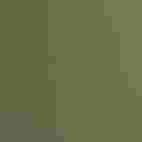White-crowned Pigeon
At a Glance
A strong and fast flier, the White-crowned Pigeon regularly undertakes long flights over water, and it has been able to colonize islands almost throughout the Caribbean. It occurs commonly in parts of southern Florida, but most of its Florida nesting colonies are on small offshore islands. Flocks are usually seen flying swiftly overhead, or perching in treetops, feeding on berries.
All bird guide text and rangemaps adapted from Lives of North American Birds by Kenn Kaufman© 1996, used by permission of Houghton Mifflin Harcourt Publishing Company. All rights reserved.
Category
Pigeon-like Birds, Pigeons and Doves
IUCN Status
Near Threatened
Habitat
Coasts and Shorelines, Forests and Woodlands, Urban and Suburban Habitats
Region
Florida
Behavior
Direct Flight
Population
550.000
Range & Identification
Migration & Range Maps
Somewhat nomadic, moving about in Florida (and in Caribbean) with changing food supplies. Banding returns show that some Florida birds winter in West Indies, but many also winter on Florida Keys and some on southern Florida mainland.
Description
13" (33 cm). Dark, slaty (often looks black) with striking white cap, green iridescence on neck. Female is duller, and juvenile has grayish cap.
Size
About the size of a Crow, About the size of a Robin
Color
Black, Gray, White
Wing Shape
Rounded, Short
Tail Shape
Rounded, Square-tipped
Songs and Calls
An owl-like coo-coo-co-wooo.
Call Pattern
Undulating
Call Type
Hoot
Habitat
Mangrove keys, wooded islands. Moves about freely among wooded habitats in south Florida. Usually nests in mangroves on small offshore islands, sometimes in outer fringe of mangroves along mainland, but generally avoids areas having raccoons (apparently a major nest predator). Feeds in tropical hardwood groves on islands and mainland.
Sign up for Audubon's newsletter to learn more about birds like the White-crowned Pigeon
Behavior
Eggs
2, sometimes 1. White. Incubation is by both parents, mostly by female at night and male by day; incubation period not well known.
Young
Both parents feed young "pigeon milk." Young leave nest at about 3 weeks. In parts of range, may raise 3 broods per year.
Feeding Behavior
Forages almost entirely in trees, clambering about with an agility surprising for size of bird, leaning and stretching and sometimes hanging upside down momentarily to reach berries. Seldom comes to the ground to feed.
Diet
Mostly fruits and berries. Feeds on the fruits and berries of a great variety of native trees and shrubs of the Caribbean region, also sometimes those of introduced plants. May eat seeds at times, and perhaps rarely insects or snails.
Nesting
In Florida, breeds most commonly during July and August. Often nests in colonies. Male calls to attract female while perching erect, chest puffed out. In courtship, male struts and nods. Nest site is usually on fork in horizontal branch, low (below 15') in mangroves or other shrubs, sometimes on cactus; may be up to 30' above ground or water, or on ground on small islands. Nest (probably built by both sexes) is loosely-constructed platform of twigs, lined with grasses or other fine material.
Conservation
Conservation Status
Florida population estimated at about 7,500 pairs, and considered vulnerable because of continuing habitat loss on the Florida Keys and elsewhere. Numbers apparently declining on many islands in Caribbean, owing to overhunting and habitat loss.
Climate Threats Facing the White-crowned Pigeon
Choose a temperature scenario below to see which threats will affect this species as warming increases. The same climate change-driven threats that put birds at risk will affect other wildlife and people, too.






